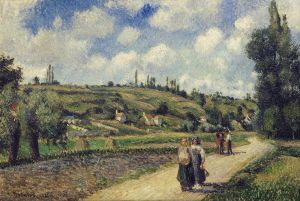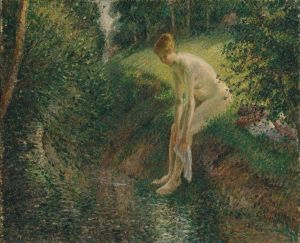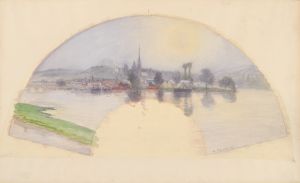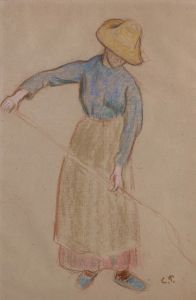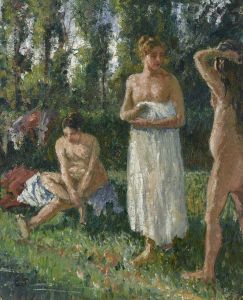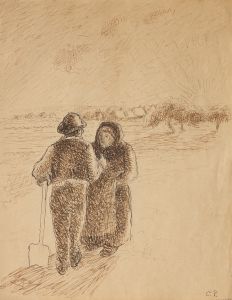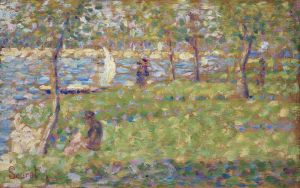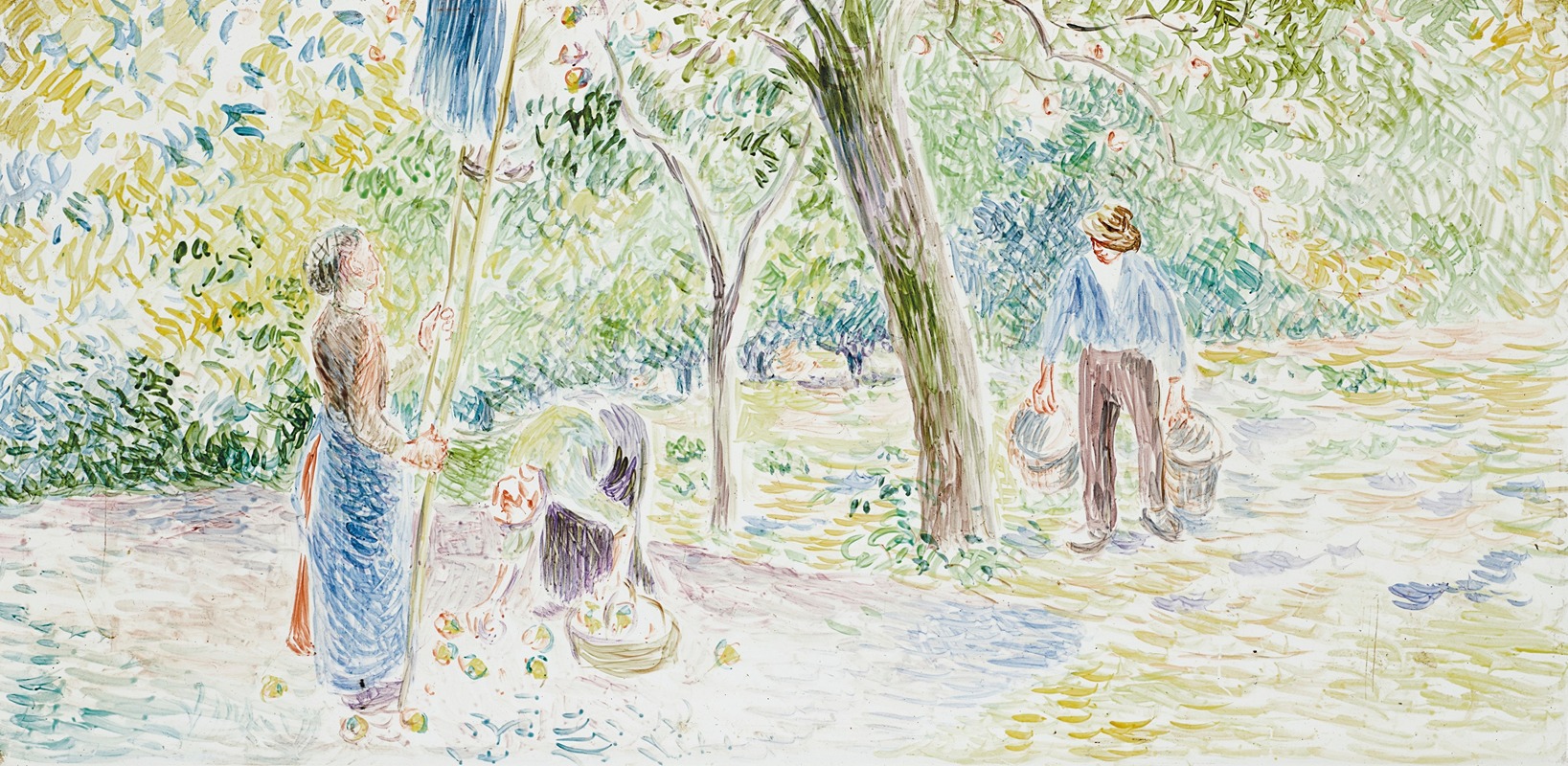
La cueillette des pommes
A hand-painted replica of Camille Pissarro’s masterpiece La cueillette des pommes, meticulously crafted by professional artists to capture the true essence of the original. Each piece is created with museum-quality canvas and rare mineral pigments, carefully painted by experienced artists with delicate brushstrokes and rich, layered colors to perfectly recreate the texture of the original artwork. Unlike machine-printed reproductions, this hand-painted version brings the painting to life, infused with the artist’s emotions and skill in every stroke. Whether for personal collection or home decoration, it instantly elevates the artistic atmosphere of any space.
"La cueillette des pommes" (Apple Picking) is a painting by the renowned French artist Camille Pissarro, a pivotal figure in the Impressionist movement. Created in 1886, this artwork exemplifies Pissarro's dedication to capturing rural life and his innovative approach to landscape and genre painting.
Camille Pissarro was born on July 10, 1830, on the island of St. Thomas in the Danish West Indies. He moved to Paris in 1855, where he became a central figure in the Impressionist movement. Pissarro was known for his commitment to painting scenes of rural and urban life, often focusing on the working class and their environments. His work is characterized by its loose brushwork, vibrant color palette, and keen observation of light and atmosphere.
"La cueillette des pommes" is a testament to Pissarro's interest in rural themes and his ability to depict the harmony between humans and nature. The painting portrays a group of figures engaged in the activity of apple picking, set against a lush, verdant landscape. The composition is carefully arranged to draw the viewer's eye through the scene, with the figures distributed across the canvas in a manner that suggests movement and interaction.
Pissarro's use of color in this painting is particularly noteworthy. He employs a range of greens, yellows, and earth tones to convey the richness of the orchard and the warmth of the sunlight filtering through the trees. The dappled light and shadow create a sense of depth and realism, while the loose, expressive brushstrokes capture the spontaneity of the moment.
The painting reflects Pissarro's interest in the lives of rural workers, a theme that recurs throughout his oeuvre. By focusing on the everyday activity of apple picking, Pissarro elevates a simple, mundane task to the level of fine art, inviting viewers to appreciate the beauty and dignity of rural labor. This focus on the working class was a hallmark of Pissarro's work and aligned with his anarchist beliefs, which emphasized the importance of community and the value of labor.
"La cueillette des pommes" was created during a period when Pissarro was experimenting with Neo-Impressionism, influenced by the pointillist techniques of Georges Seurat and Paul Signac. However, unlike the strict pointillism of Seurat, Pissarro's approach remained more fluid and less rigid, blending elements of Impressionism with the new techniques he was exploring.
The painting is part of the collection at the Musée d'Orsay in Paris, which houses an extensive array of Impressionist and Post-Impressionist masterpieces. As with many of Pissarro's works, "La cueillette des pommes" is celebrated for its ability to capture the essence of rural life with sensitivity and nuance.
Overall, "La cueillette des pommes" is a significant work within Pissarro's body of work, illustrating his mastery of color, light, and composition, as well as his enduring interest in the depiction of rural life. Through this painting, Pissarro invites viewers to engage with the beauty of the natural world and the quiet dignity of everyday labor.






